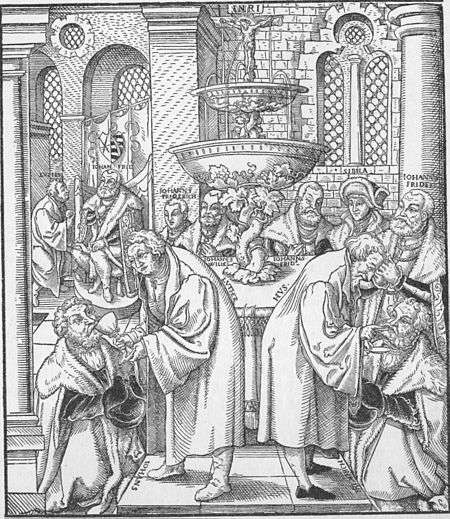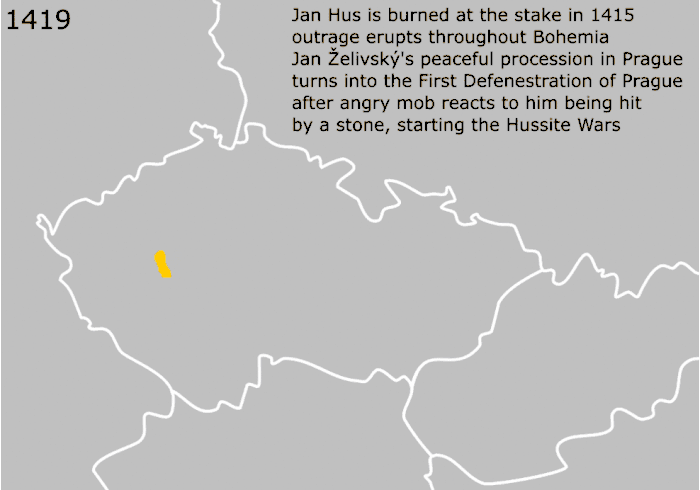Utraquism

Utraquism (from the Latin sub utraque specie, meaning "in both kinds") or Calixtinism (from chalice; Latin: calix, mug, borrowed from Greek kalyx, shell, husk; Czech: kališníci) was a principal dogma of the Hussites and one of the Four Articles of Prague.[1] It maintained that communion under both kinds (both bread and wine, as opposed to the bread alone) should be administered to the laity during the celebration of the Eucharist.[2] After the Hussite movement split into various factions early in the Hussite Wars, Hussites that emphasized the laity's right to communion under both kinds became known as Moderate Hussites, Utraquist Hussites, or simply Utraquists. The Utraquists formed the most numerous of the major Hussite factions.
Following the victory of allied Utraquist and Catholic forces in the Hussite Wars, Utraquists constituted a majority of the Bohemian population until the outbreak of the Thirty Years' War, nearly two centuries later. The Battle of White Mountain, in 1620, marked the end of the Bohemian Revolt and, consequently, the end of almost two hundred years of Utraquist predominance.
History

Utraquism was a Christian dogma first proposed by Jacob of Mies, professor of philosophy at the University of Prague, in 1414.[1] It maintained that the Eucharist should be administered "in both kinds"[2] – as both bread and wine – to all the congregation, including the laity. The practice among Roman Catholics at the time was for only the priests to partake of the wine.[1]
The Utraquists were a moderate faction of the Hussites (in contrast to the more radical Taborites, Orebites and Orphans). They were also known as the Prague Party or the Calixtines – from calix, Latin for their emblem, the chalice.[1]
The Utraquists eventually reunited with the Holy See and defeated the more radical Taborites and Orphans at the Battle of Lipany in 1434.[1] After that battle, nearly all forms of Hussite revival were Utraquist, as seen with George of Podebrady, who even managed to cause the city of Tábor, the famous Taborite stronghold, to convert to Utraquism.
Utraquistic subterfuge
In the book, The Meaning of Meaning, by C. K. Ogden and I. A. Richards, utraquistic subterfuge is described as the use of a term that refers either to its physical or to its mental referent, and this ambiguity is left open to the interpretation of the individual reader or listener. One example given is the word "perception".[3][4]
See also
References
Bibliography
| Look up utraquism in Wiktionary, the free dictionary. |
- Ogden, C. K.; Richards, I. A. (1989) [1923]. "Chapter VI: The Theory of Definitions". The Meaning of Meaning. ISBN 0-15-658446-8.

